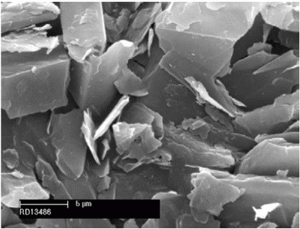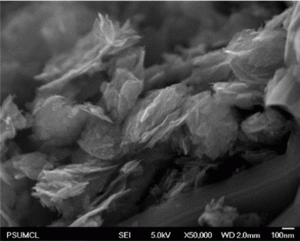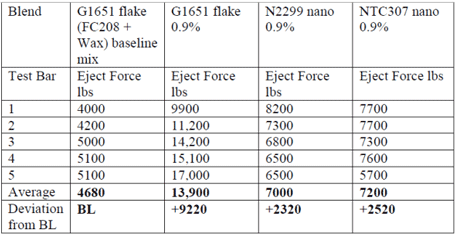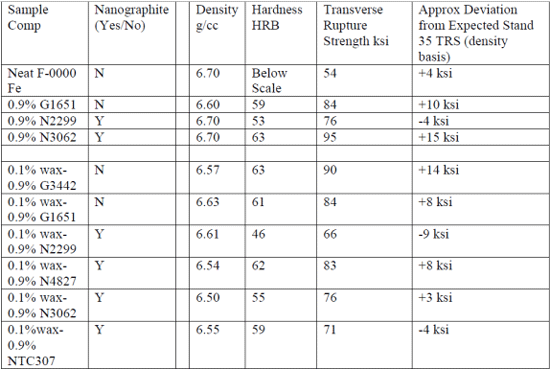The potential of nanographite as a die wall lubricant in Powder Metallurgy
Dr. David Whittaker reviews this presentation exclusively for ipmd.net.
Graphite is normally added to ferrous Powder Metallurgy mixes at particle sizes in the range 5 to 20µm as a “carbon raiser” in order to convert iron powder into “steel” parts during the sintering process.
Graphite is considered to be a very effective solid phase lubricant, because the basal cleavage of graphite flakes on exposure to wear forces forms “shear plates”, which provide effective barrier layer lubrication at the friction interface. However, at the conventional particles sizes and at the typical maximum addition levels in PM mixes (around 0.8 wt%), there is insufficient graphite available at the die wall-part interface to provide the degree of lubricity required for effective part ejection.
If graphite is used at nanoscale sizes, a significant increase in surface area per unit weight addition can be generated, with a potential beneficial influence on resultant lubricity.
Figs. 1 and 2 show two different synthetic graphite products, manufactured from the same granular, acicular graphite parent carbon. The material in Fig. 1 is a nominal 8µm graphite powder, with a through plane thickness of 0.25-0.50 µm (750-1500 graphene sheets) and a BET surface area of approximately 11 m²/gram.
On the other hand, the nanographite, shown in Fig. 2, is composed of 1 µm agglomerated graphite lamellae, with a primary particle thickness around 10 nm (~30 graphene sheets), and has a BET surface area around 350 m²/gram.
The reported study was therefore aimed at determining the effectiveness of using nanographite addition to provide die wall lubrication while reducing or eliminating the need for added wax lubricant.
The principle behind this concept was that the nanographite addition, unlike wax lubricant, would not be required to be removed prior to sintering, but, instead, would then fulfil its normal carbon-raising role.
The effectiveness of the nanographite additions in providing metallurgically active carbon was therefore also assessed.
Table 1 identifies the parent carbon type, the carbon content and particle size parameters of the graphite/nanographite materials used in the study. Because of the tendency of nanographite platelets to agglomerate, it was found that “laser particle size” (Microtrac) data do not offer a good means of characterising primary particle size; BET surface area is much more discriminating in this context.
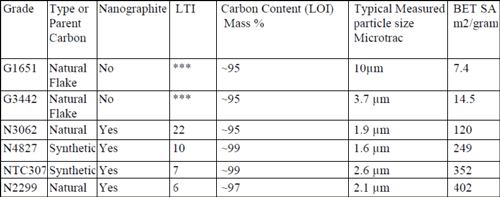
Table 1 Graphite and Nanographite parent carbon indentification, nominal carbon content and particle size characteristics (Courtesy MPIF)
In a first set of trials, the effects of nanographite and standard graphite additions (without wax additions) on ejection force for TRS bar samples were compared with a baseline of FC0208 + 0.75 wt% Acrawax (Table 2).
Average ejection force for the baseline mix was 4680 lbs., compared with 13,900 lbs. for the standard graphite mix and 7000-7200 lbs. for the nanographite containing mixes.
Overall, therefore, it was concluded that both mixes containing nanoparticles as graphite source showed significant decreases in ejection force compared with the conventional graphite mix, although their ejection forces were not as low as the baseline powder with a wax lubricant addition.
In a further trial the potential synergy between the lubrication effects of nanographite and reduced levels of wax additions (0.1 wt% rather than 0.75 wt%) was studied. The data, presented in Table 3, show that the combination of wax and nanographite powder provides the highest reduction in ejection force. Iron powder with added conventional graphites and 0.1 wt% wax showed lower levels of reduction in ejection force.
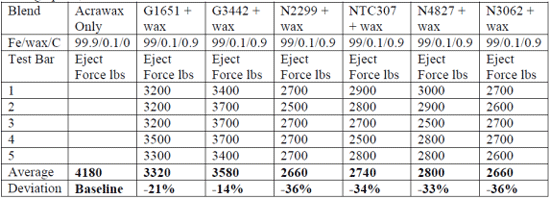
Table 3 Ejection force (TRS bars) for Iron-Wax baseline and iron powder with added graphite or nanographite and 0.1 wt% wax lubricant (Courtesy MPIF)
Finally, the various test bars were sintered and their hardnesses, densities and transverse rupture strengths were measured. The results of these tests are presented in Table 4.
Although the authors claimed that a full analysis of these sintered properties was “outside their field of technical expertise”, they did draw the conclusion that the data in Table 4 showed that the nanocarbon materials utilised in this study were metallurgically active and did “go into solution” as evidenced by the increase in hardness and TRS compared with the “neat” sintered iron (F-0000).
This presentation sparked a significant discussion during the conference session and it was concluded that the concept of using nanographite additions in combination with reduced levels of wax lubricant merited more detailed investigation.
News | Articles | Market reviews | Search directory | Subscribe to e-newsletter



